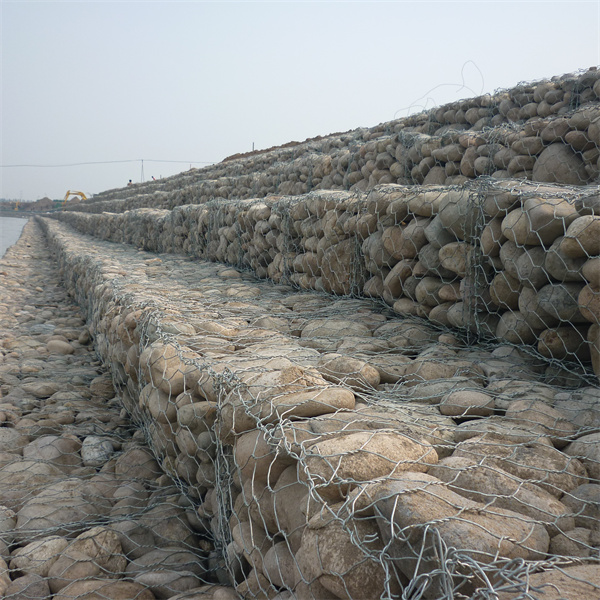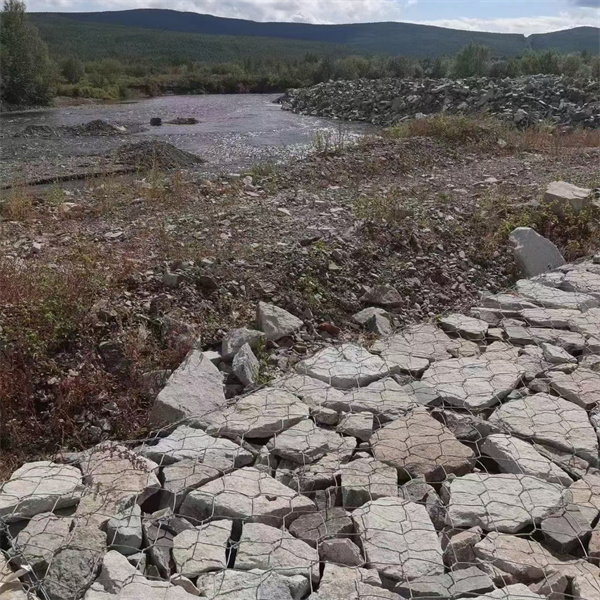jan . 30, 2025 04:00 Back to list
gabion filler ideas
Choosing the right gabion filler can transform an ordinary garden or landscape into a stunning work of art. Whether you're using them for retaining walls, decorative features, or benches, gabions offer both functionality and aesthetic appeal. This guide will delve into innovative gabion filler ideas, ensuring your project stands out and meets the highest standards of quality and design.
For those inclined towards a more artistic touch, combining different materials to create patterns or motifs can turn a gabion into a unique piece of art. By alternating layers of stone, glass, and wood, for instance, you can create visually striking patterns that enhance the appeal of any garden or architectural feature. This method offers endless possibilities and allows for personalization tailored to any aesthetic preference. Large cobbles and boulders can provide a dramatic effect and can be particularly useful in harsh environments where wind and water erosion are concerns. Their size and weight offer superior stability, making them suitable for retaining walls and shoreline protection. The natural variation in size and color among cobbles and boulders adds an element of unpredictability and interest to the design. Crushed concrete is another viable option, particularly for those focused on sustainability and reuse of materials. Using crushed concrete not only diverts waste from landfills but also provides a robust material for gabion walls. This choice is both eco-friendly and cost-effective, appealing to environmentally conscious consumers looking for functional design solutions. As an expert in the field, it's important to emphasize the significance of context when selecting gabion fillers. Climate conditions, local ecology, and the intended purpose of the gabion structure should all influence material choice. Consulting with landscape architects or construction professionals who specialize in gabion installations can provide invaluable insights, ensuring the chosen fillers offer both aesthetic satisfaction and structural integrity. Ultimately, the selection of gabion fillers offers an opportunity to enhance both the visual appeal and functionality of landscape projects. By considering a variety of materials and their unique attributes, one can create truly remarkable outdoor spaces that resonate with both nature and architecture. Whether opting for conventional stones or more innovative materials, understanding the properties and benefits of each filler will maximize the impact and longevity of your gabion design.


For those inclined towards a more artistic touch, combining different materials to create patterns or motifs can turn a gabion into a unique piece of art. By alternating layers of stone, glass, and wood, for instance, you can create visually striking patterns that enhance the appeal of any garden or architectural feature. This method offers endless possibilities and allows for personalization tailored to any aesthetic preference. Large cobbles and boulders can provide a dramatic effect and can be particularly useful in harsh environments where wind and water erosion are concerns. Their size and weight offer superior stability, making them suitable for retaining walls and shoreline protection. The natural variation in size and color among cobbles and boulders adds an element of unpredictability and interest to the design. Crushed concrete is another viable option, particularly for those focused on sustainability and reuse of materials. Using crushed concrete not only diverts waste from landfills but also provides a robust material for gabion walls. This choice is both eco-friendly and cost-effective, appealing to environmentally conscious consumers looking for functional design solutions. As an expert in the field, it's important to emphasize the significance of context when selecting gabion fillers. Climate conditions, local ecology, and the intended purpose of the gabion structure should all influence material choice. Consulting with landscape architects or construction professionals who specialize in gabion installations can provide invaluable insights, ensuring the chosen fillers offer both aesthetic satisfaction and structural integrity. Ultimately, the selection of gabion fillers offers an opportunity to enhance both the visual appeal and functionality of landscape projects. By considering a variety of materials and their unique attributes, one can create truly remarkable outdoor spaces that resonate with both nature and architecture. Whether opting for conventional stones or more innovative materials, understanding the properties and benefits of each filler will maximize the impact and longevity of your gabion design.
Next:
Latest news
-
Wire Mesh Thickness Impact on Gabion Wall Load Bearing
NewsAug.12,2025
-
Ultimate Guide to Hexagonal Gabion Box
NewsAug.12,2025
-
Types of Rocks for Gabion Baskets Durability and Aesthetics
NewsAug.12,2025
-
Standard Gabion Box Sizes and Their Industrial Applications
NewsAug.12,2025
-
Easy Guide to Building Garden Gabion Cages at Home
NewsAug.12,2025
-
Drainage Solutions for Gabion Mesh Structures
NewsAug.12,2025
-
Visualizing Gabion 3D Integration in Urban Landscapes with Rendering
NewsJul.23,2025
Manufacturer of Silk Screen Products
QuanhuaProvide high-quality products and services to global customers.






